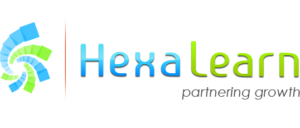SCORM Info Per Language
It sounds very easy: equate text, swap media, export new SCORM and upload to the LMS. But for learning developers, this method can insidiously increase workload, balloon expenditures, and add complexity to upkeep when creating multilingual eLearning training courses. Let us learn how this impacts the eLearning advancement procedure and exactly how Instructional Developers and designers can construct a lot more scalable multilingual options.
1 Growth Expenses: Time, Equipment, And Version Control
Translation And Localization Traffic Jams
- Each course upgrade– be it a new examination, photo, or compliance modification– suggests restoring every language translation. Developers require to repackage, re-test, and re-upload each documents by hand, slowing down model cycles down.
- Localization teams have to manage language-specific properties (audio, video, subtitles, text on-screen), every one of which need programmer intervention for every SCORM output.
Authoring And SCORM Upkeep
- Designers frequently spend hours reconfiguring materializes, adjusting LMS tracking, and validating communications for every version.
- Each language becomes its very own “mini-project,” raising QA and LMS testing cycles for programmers and customers alike.
Storage And Deployment Difficulties
- Maintaining numerous SCORM variations eats added repository space and LMS bandwidth. Developers must additionally preserve constant data frameworks throughout all variants to stay clear of confusion.
2 Indirect Development Prices: Intricacy And Risk
Variation Drift Across Languages
- When programmers take care of several SCORM outcomes, updates might not roll out consistently. Learners in various regions could access out-of-date variations– a concern that reflects poorly on both L&D and compliance groups.
Higher Assistance Load
- Pests unique to one language version typically call for developer-level debugging.
- Mismatched SCORM setups can trigger inconsistent LMS monitoring or conclusion coverage– draining pipes development and support resources.
Scalability Roadblocks
- For eLearning designers, every added language indicates brand-new writing, QA, and packaging jobs. As multilingual demand grows, maintaining parity across variations becomes unsustainable.
3 Effect On Knowing Experience
Postponed Rollouts
- Students may wait weeks for updated variations in their language because programmers are busy reconstructing multiple SCORMs.
Inconsistent Learning Top Quality
- Distinctions in navigating tags, subtitles, or UI layouts throughout variations can perplex students and break design uniformity.
- Without combined advancement workflows, availability components (alt text, transcripts, inscriptions) might vary in quality from one language to one more.
Smarter Techniques For Creating Multilingual eLearning
Produce One Course– Publish in Lots Of Languages
New authoring software application make it possible for designers to build a single SCORM plan with language option controls. This technique maintains the program logic streamlined however conserves the translations as modular sources– making it much simpler to get constant results throughout languages.
Sponsored material – short article proceeds below
Trending eLearning Authoring Devices
Externalize Text And Media Possessions
By maintaining message, captions, and UI tags in external resource documents (e.g., XLIFF, JSON, XML) the SCORM can be modified by developers in regards to translations without recreating the entire SCORM. This method assists in quicker updates and boosted partnership between localization teams and Training Designers.
Leverage LMS Localization Includes
Numerous LMS systems sustain multilingual UI aspects, alerts, and also course titles. Designers can concentrate on content-level localization instead of duplicating entire packages.
Automate QA And Variation Control
Incorporating version control (e.g., Git, SVN) and automation devices assists eLearning programmers track changes, restore multilingual training courses efficiently, and prevent version drift. Automated screening scripts can check for busted links, missing subtitles, or inconsistent materializes across languages.
The Growth ROI
Framing the issue from an advancement viewpoint aids stakeholders recognize business situation:
- Reduced work
For eLearning programmers: fewer rebuilds and hands-on product packaging jobs. - Faster updates
Across all languages when regulatory or material adjustments occur. - Consistent student experience
Across locales, boosting quality and interaction. - Reduced long-term upkeep prices
Making it possible for teams to scale international learning programs efficiently.
Conclusion
For eLearning programmers, having different SCORM documents by language can make a basic localization job right into a maintenance migraine. Truth possibility is in reconsidering creating multilingual eLearning style– accepting modular, automation-centered layout principles that streamline localization, assurance version consistency, and preserve quality at range.
Via the execution of centralized content designs, LMS localization capabilities, and automation systems, growth groups are able to bypass tiresome SCORM packaging rep to concentrate on what is most important: the layout of compelling, easily accessible, and reliable knowing experiences for worldwide audiences. This unified strategy not just enhances content delivery but also makes sure consistent student engagement and efficiency across all languages and regions.
